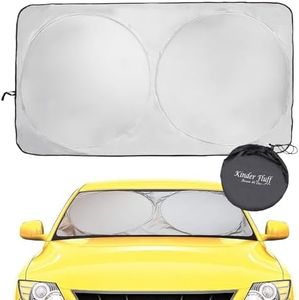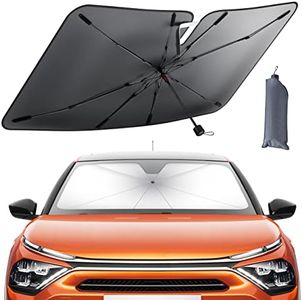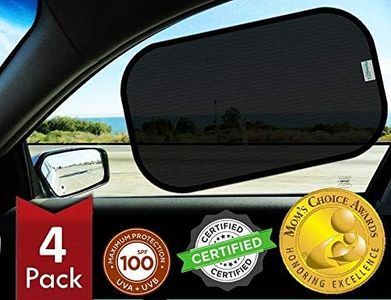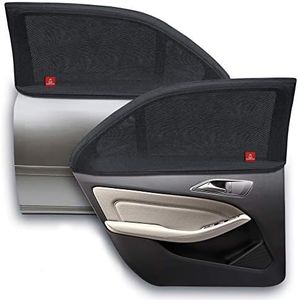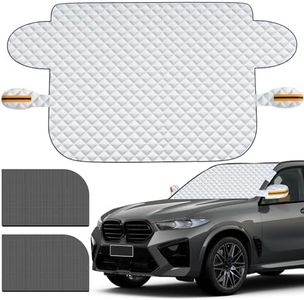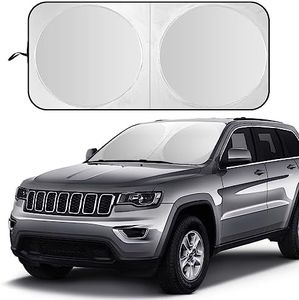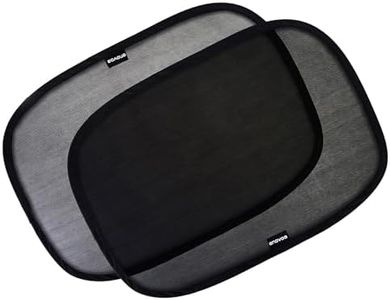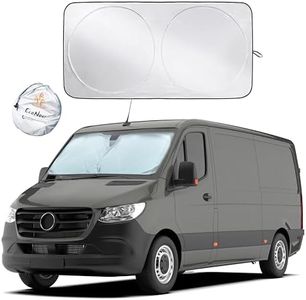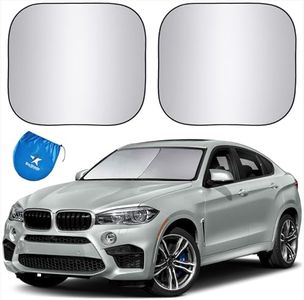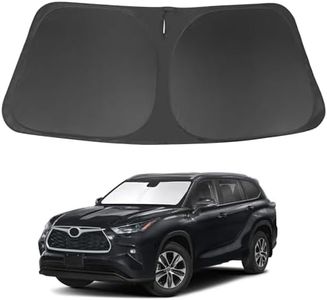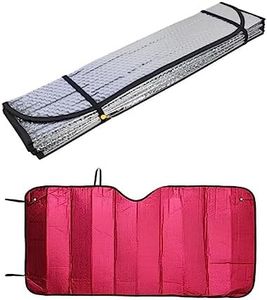We Use CookiesWe use cookies to enhance the security, performance,
functionality and for analytical and promotional activities. By continuing to browse this site you
are agreeing to our privacy policy
10 Best Car Sun Shades
From leading brands and best sellers available on the web.Buying Guide for the Best Car Sun Shades
Choosing the right car sun shade can make a big difference in keeping your vehicle cooler, protecting your interior, and making your driving experience more comfortable. To find the best sun shade for your needs, think about how you use your car, where you park most often, and what features you value most such as ease of use, coverage, and storage convenience. Understanding the key aspects will help you select a sun shade that fits your car well and serves your needs effectively.Size and FitSize and fit refer to how well the sun shade matches the dimensions and shape of your car’s windshield or windows. This is crucial, because a poorly fitting sun shade will let sunlight in around the edges, reducing its ability to block heat and UV rays. Car sun shades come in a variety of sizes, some made for universal fit and others custom-cut for specific makes or models. To pick the right one, measure your windshield or the windows you want to cover and compare to the product’s dimensions. If you want the maximum protection and a tidy look, get a shade as close to your window size as possible; a universal one might work if you’re okay with a little extra material or small gaps.
MaterialMaterial determines how well a sun shade can block heat and sunlight, as well as how durable and easy-to-handle it is. Common materials include reflective aluminum foil, polyester fabric, and bubble insulation. Reflective shades bounce more sunlight away and are good for very hot climates, while fabric shades are often easier to fold and store but may offer less heat protection. Bubble insulation types provide decent heat blocking with lightweight construction. Choose based on your climate—if you need to keep your car as cool as possible, go for thicker, reflective materials; if you want something quick and compact, lighter fabrics could be more practical.
Type and DesignType and design describe how the sun shade is built and how you use it. Common types include accordion-style folding, roll-up, pop-up, and static cling shades. Folding or roll-up shades are popular for large windshields and are easy to store, while pop-up and static cling designs are usually best for side windows. Each type has its own pros and cons in terms of convenience and coverage. If you want a sun shade that's fast and simple to use every day, look for a pop-up or folding design. For long-term parking or full coverage, consider multiple pieces or custom-fit panels.
Ease of Use and StorageEase of use refers to how simple it is to set up and take down your sun shade, as well as how conveniently it stores when not in use. Some shades pop open and stay in place with a single move, while others need unfolding or rolling up, which can take more time. Storage is important if you have limited space in your car; compact designs that collapse or fold flat are ideal for keeping in your door pocket or glove box. If you'll be using your sun shade often, look for one that you can put up and take down without much effort or fuss.
UV and Heat ProtectionUV and heat protection ratings tell you how well the sun shade can block sunlight and stop your car from heating up. Some sun shades specify the percentage of UV or heat they block. Higher UV protection is better for keeping your dashboard and seats from fading or cracking, while better heat protection will make stepping into your car more comfortable. If you live in a hot or sunny area or often leave your car parked outside, prioritize a sun shade with high UV and heat-blocking capabilities to preserve your vehicle’s interior and comfort.
Coverage AreaCoverage area refers to which windows or parts of the car the sun shade is designed to protect. Some shades only cover the front windshield, while others are meant for rear or side windows, and some are sets that include multiple pieces for all-around coverage. Decide whether you mainly want to keep the glare and heat off the driver’s area or whether you want to shade rear passengers or protect the entire vehicle. For family cars, wider or multi-piece coverage might be ideal; for drivers mostly alone, a front shade may be enough.
